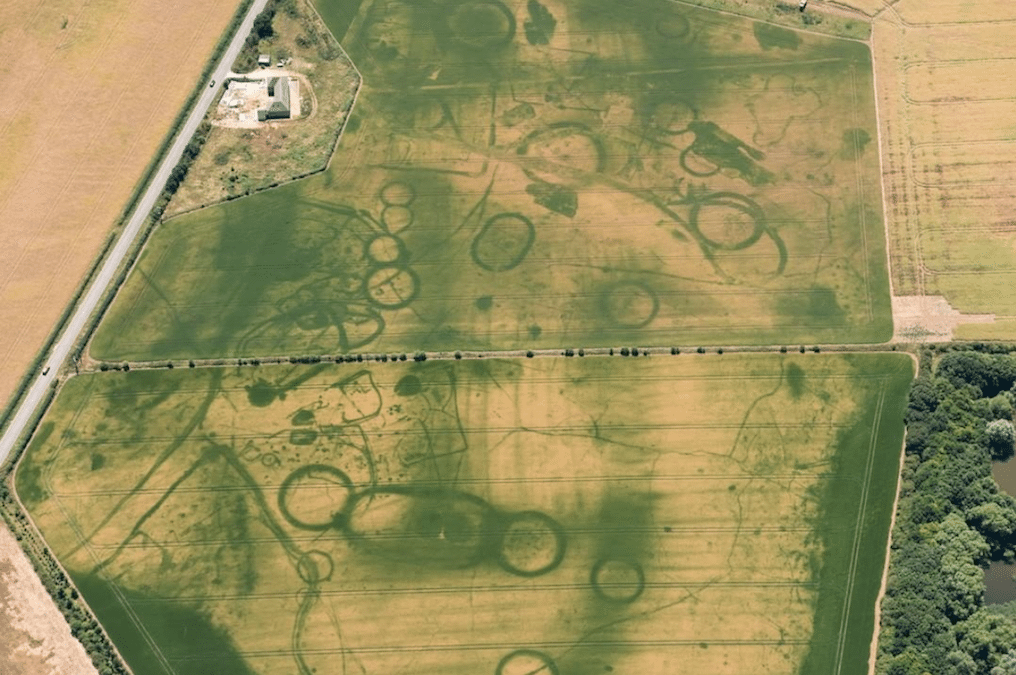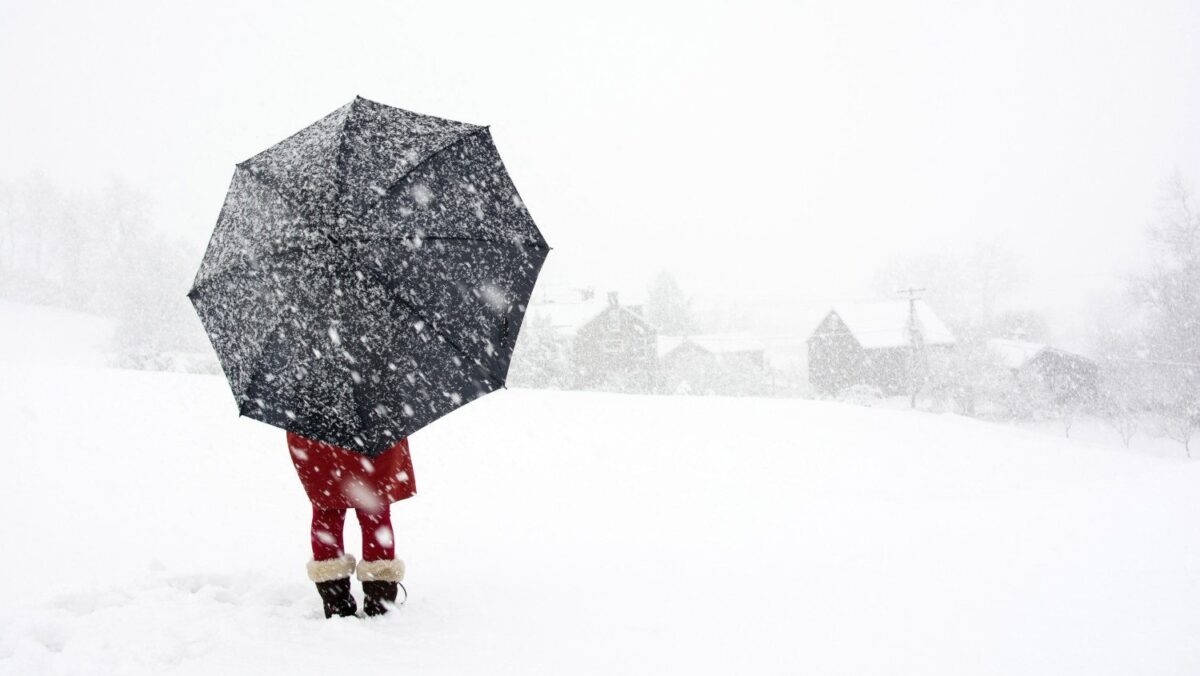A Heat Wave Revealed Centuries-Old Gardens And Ancient Settlements—All Still Underground
The United Kingdom is coming off a record hot summer that left plants struggling for a drink. Fields that are usually green through the summer faded to yellow and brown, and in some places, the parched grass revealed evidence of ancient ruins and centuries-old gardens still beneath the ground.
At Chatsworth House, in central England, the heat baking the grounds made a secret garden dating back to the 17th century visible on the property’s South Lawn. “The view from the roof is looking a little strange lately,” the house’s Instagram account says beneath a photo showing distinct patterns on the lawn:
The grass that turned brown, going dormant due to the lack of rainfall, revealed the outline of flowerbeds and paths dating back to 1699. Chatsworth House’s head gardener told the BBC, “It wasn’t a lost landscape or anything — we knew it was there.” But because it’s normally green, it’s hidden from sight.
Many people who frequent the estate knew the history and knew the old landscape existed, but they had never seen it before this year’s heat wave.
In the hot, dry conditions, the plants at the surface were either buoyed or burdened by what’s below: A stone foundation beneath might heat and dry the grass above more quickly, while vegetation above a buried ditch might have access to more moisture and stay greener than the surrounding landscape.
The Guardian reported that elsewhere in the U.K., the oppressive heat revealed previously unknown sites, from burial mounds and settlements from the Iron Age to Roman ruins and passageways some scientists believe could have been used for chariot races.
In other places, the heat wave showed the outlines of structures on sites that were already marked for preservation. Aerial photographers with Historic England captured many images of crop marks that the drought revealed, including these in Oxfordshire:
Archaeologists have known about the monuments at this prehistoric settlement for a long time, the organization says, but some of the features visible in the photograph “have not been visible for years.”
Meanwhile, some aerial photographers have also noticed marks from more-recent history. A pilot spotted the outlines of an old runway on a field during flight near Lasham, England. The runway was part of Lasham Airfield during World War II, the BBC reported, and though the airfield is still in operation, some of it had disappeared under farm land — until now.
The head of aerial investigation and mapping for Historic England told The Guardian that this summer was the best for discovering underground sites since 2011, when another heat wave uncovered 1,500 new sites around the kingdom.
But most people who live in the U.K. are probably glad that the heat wave has passed and fall has arrived.
Follow Meteorologist Jason Meyers on Twitter or watch one of his entertaining and educational YouTube videos.






